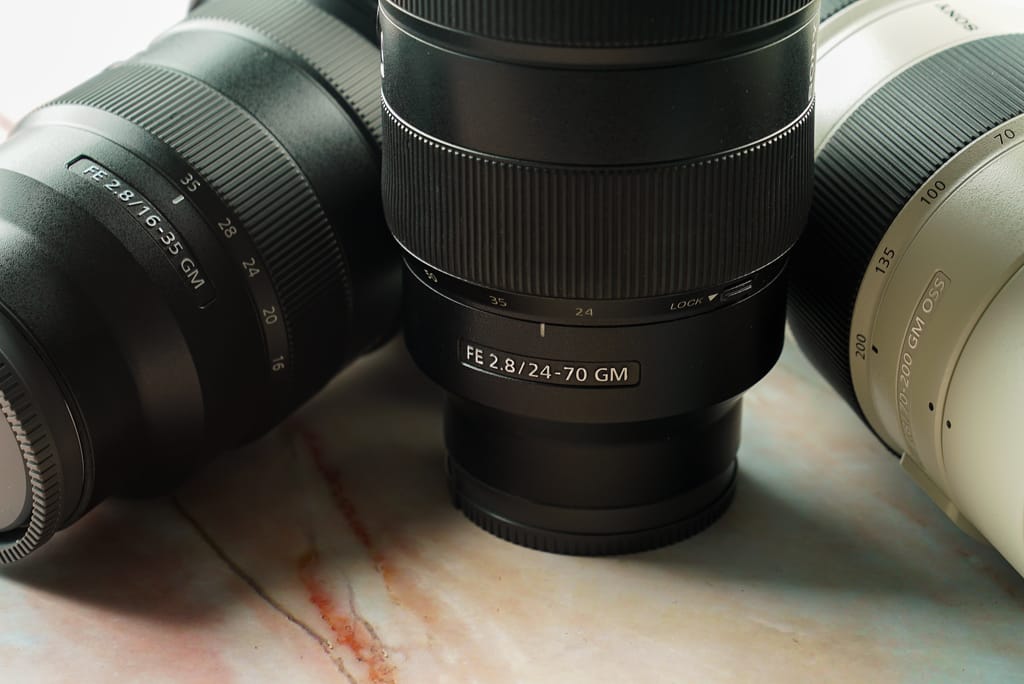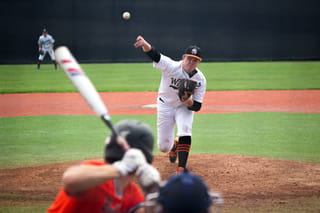
Spend some time around some semi-pro photographers and you’ll probably hear somebody mention their ‘Holy Trinity’ of zooms. This near-standard trio of lenses for pros doesn’t have anything to do with deities but there is a bit of worship involved.
Typically, what people are referring to is a specific grouping of three specific lenses in a given mount. This includes a wide-angle zoom, a standard zoom and a telephoto zoom. These trios usually represent the best zoom lenses in a manufacturer’s lineup, offering wide, constant apertures and multi-purpose focal length ranges. In the camera world, ‘all-in-one’ lenses that can cover wide-angle to telephoto do exist, but they usually lack in aperture size, build quality or other optical areas.
Let’s take a look at some examples of these top-tier zoom lenses.
Why Do People Love The Trinity?
The most commonly found full-frame trinity of lenses usually includes a 16-35mm f/2.8, a 24-70mm f/2.8 and a 70-200mm f/2.8. This effectively gives the shooter a gapless focal length range from 16mm to 200mm with a wide-open aperture of f/2.8. Often, these lens designs are continuously updated over the years to give you a Version II or III. By updating the designs, manufacturers can improve their autofocus, weight and image clarity while still keeping the focal lengths and apertures the same.
In terms of lenses, this is usually all that a photographer would need to be able to create stunning images anywhere from a wide star-filled night sky to a close-up portrait or sporting event. With only three zoom lenses, the photographer is prepared in nearly any situation from nature photography to weddings.
While some prefer prime lenses to zooms, these particular zooms are designed to perform just as well as their prime counterparts. As such, they typically come at a premium price for such performance and versatility. While the up-front price can be daunting, it’s less expensive than buying 10 prime lenses of equal optical performance to cover the vast array of focal lengths.
It’s true—some say it’s better to zoom with your feet. However, at an event like a sold-out live concert where it’s hard to get around in quickly-changing situations, this gapless concept is a blessing. It’s best to change lenses as infrequently as possible and when you have to quickly adapt to changing conditions, the trinity might be your best bet.
 What Is Each Lens’s Strength?
What Is Each Lens’s Strength?
The wide-angle favorite has traditionally been a 16mm-35mm zoom. Several manufacturers have a less-expensive f/4 version of this lens as well as an f/2.8 version. You typically won’t see image-stabilization tech on these lenses because wide-angle images won’t suffer as much from shaky hands as a telephoto would.
With a large-aperture wide-angle, you can shoot amazing landscapes and sprawling star-filled night skies. These types of lenses also excel at selfies and video blogging as well as packed wedding dance floors and concerts. Most of these lenses are also great for architecture, allowing you to get everything you need in the shot to get a sense of the scene.
The standard zoom is great for walking around, snapping street photography shots or other subjects where an extreme field of view isn’t necessary. The 24mm side can get a lot of environmental elements into your image, where the 70mm side is a flattering short telephoto for portraits. The biggest benefit of the 24-70mm is its versatility.
The telephoto zoom is perfect for weddings, nature, sports, live events and portraits. Giving you a substantial background blur when wide open, the f/2.8 makes a great deal of difference when compared to the f/4 models offered by many manufacturers at a lower price. These also usually come with stabilizer technology which comes in handy when shooting subjects with a longer lens. The longer the lens, the more apparent any vibration from shaky hands is going to be.
 Trinity Options By Brand & Mount
Trinity Options By Brand & Mount
My first introduction to the concept was through Canon’s fantastic L-series zooms. The full-frame 16-35mm f/2.8 II, the 24-70mm f/2.8 II and the 70-200mm f/2.8 II are some of the finest lenses for photo/video work that I’ve had the pleasure of working with.
The Canon APS-C equivalent of this is a bit harder to nail down, but I’ve seen the EF-S 10-22mm f/3.5-4.5, the EF-S 17-55mm f/2.8 and the 55-250mm f/4-5.6 II used. These lenses will cover the focal range but may not have the stellar image quality you’re looking for. Some of the better options here may be by third-party lens manufacturers like Tokina, Sigma or Tamron.
Sony E-mount full-frame has its own award-winning versions of the 16-35mm f/2.8 GM, standard 24-70mm f/2.8 GM and telephoto 70-200mm f/2.8 GM also. These lenses hold up perfectly to the hyper-megapixel a7R IV body.
The Nikon DG trinity stretches the wide-angle a little bit with a 14-24mm f/2.8, 24-70mm G and 70-200mm f/2.8 G as well. DX users may want to use the budget options of the DX 10-24mm f/3.5-4.5 or 12-24mm f/4, the superb 17-55mm f/2.8 and the 55-200mm f/4-5.6.
The Fuji X system has the 10-24mm f/4, the 16-55mm f/2.8 and the 50-140mm f/2.8 to fit its compact and capable system.
For adopters of the new stuff, there’s the Nikon Z 24-70mm f/2.8 and the 70-200mm f/2.8. The new Canon mirrorless system has the RF 15-35mm f/2.8 L, the RF 28-70mm f/2 L and the RF 70-200mm f/2.8 L.
As mentioned earlier, third-party manufacturers are producing a lot of very capable alternatives to the big guys listed above. Sigma and Tamron have both been developing and releasing newly-designed trinity lenses for the newer mirrorless cameras.
Even if you’re a die-hard prime lens user, it’s hard to argue with the convenience and price of having 3 top-tier zoom lenses that cover you from wide to telephoto. Let us know your personal ‘holy trinity’ of lenses in the comments below.




